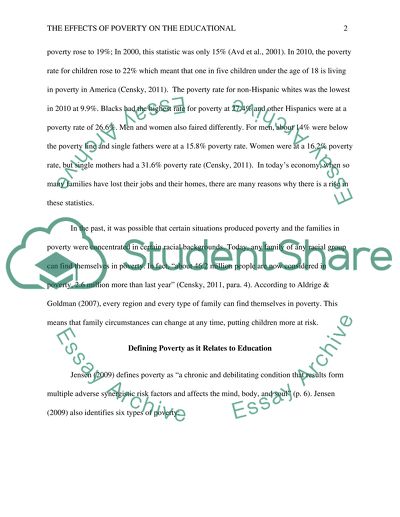Cite this document
(“The effects of poverty on the educational system of children Research Paper”, n.d.)
Retrieved from https://studentshare.org/education/1394597-the-effects-of-poverty-on-the-educational-system
Retrieved from https://studentshare.org/education/1394597-the-effects-of-poverty-on-the-educational-system
(The Effects of Poverty on the Educational System of Children Research Paper)
https://studentshare.org/education/1394597-the-effects-of-poverty-on-the-educational-system.
https://studentshare.org/education/1394597-the-effects-of-poverty-on-the-educational-system.
“The Effects of Poverty on the Educational System of Children Research Paper”, n.d. https://studentshare.org/education/1394597-the-effects-of-poverty-on-the-educational-system.


